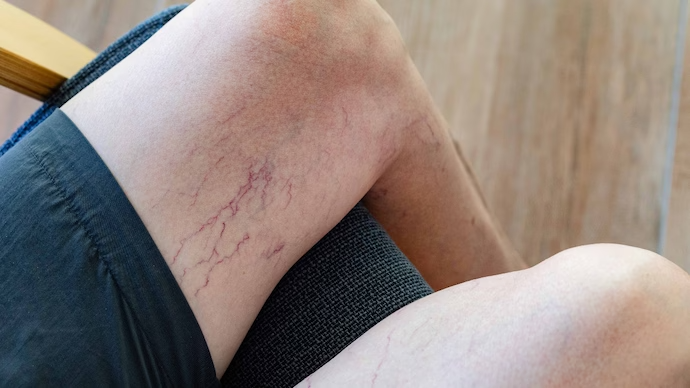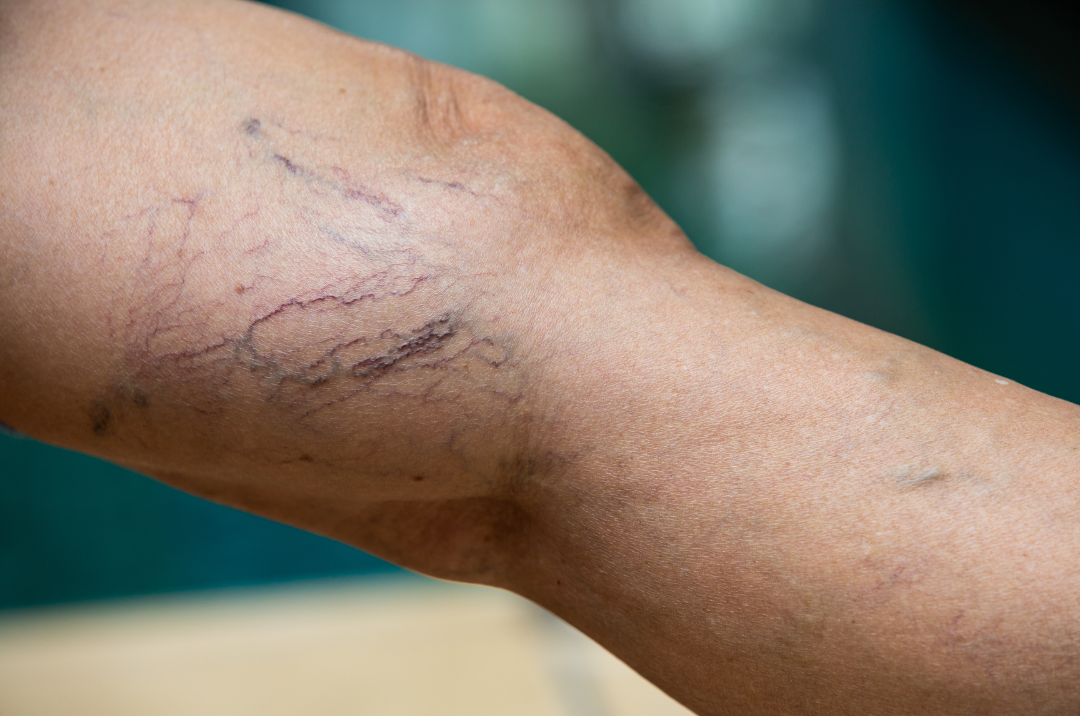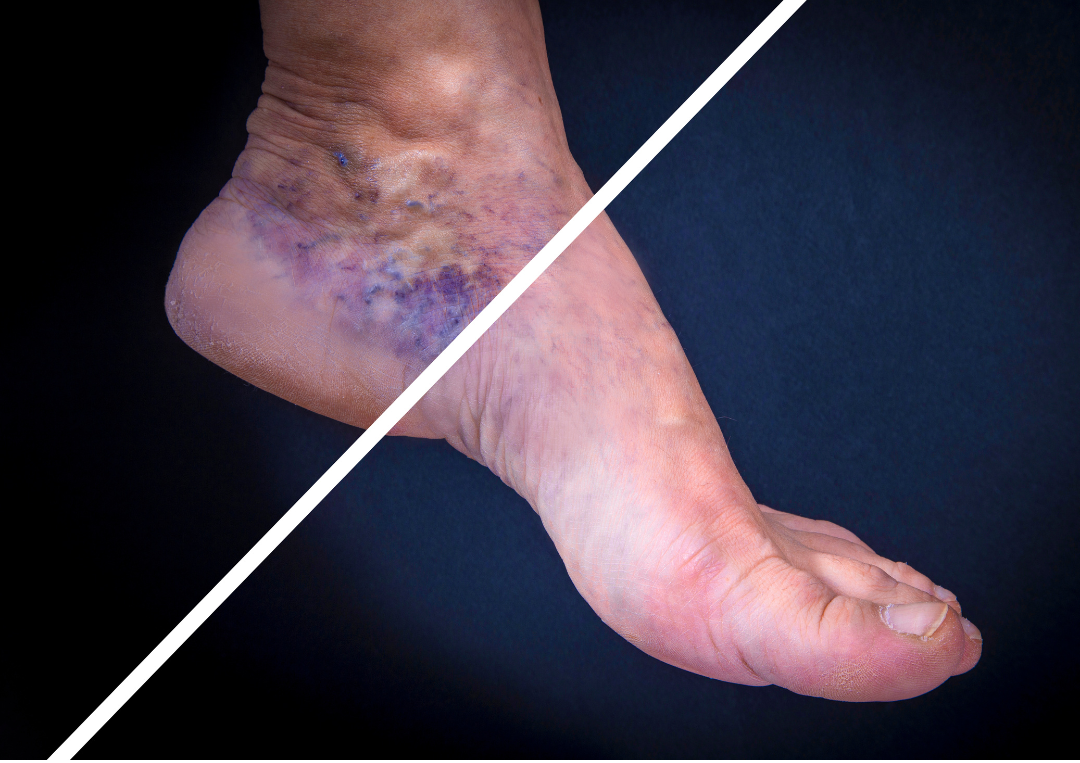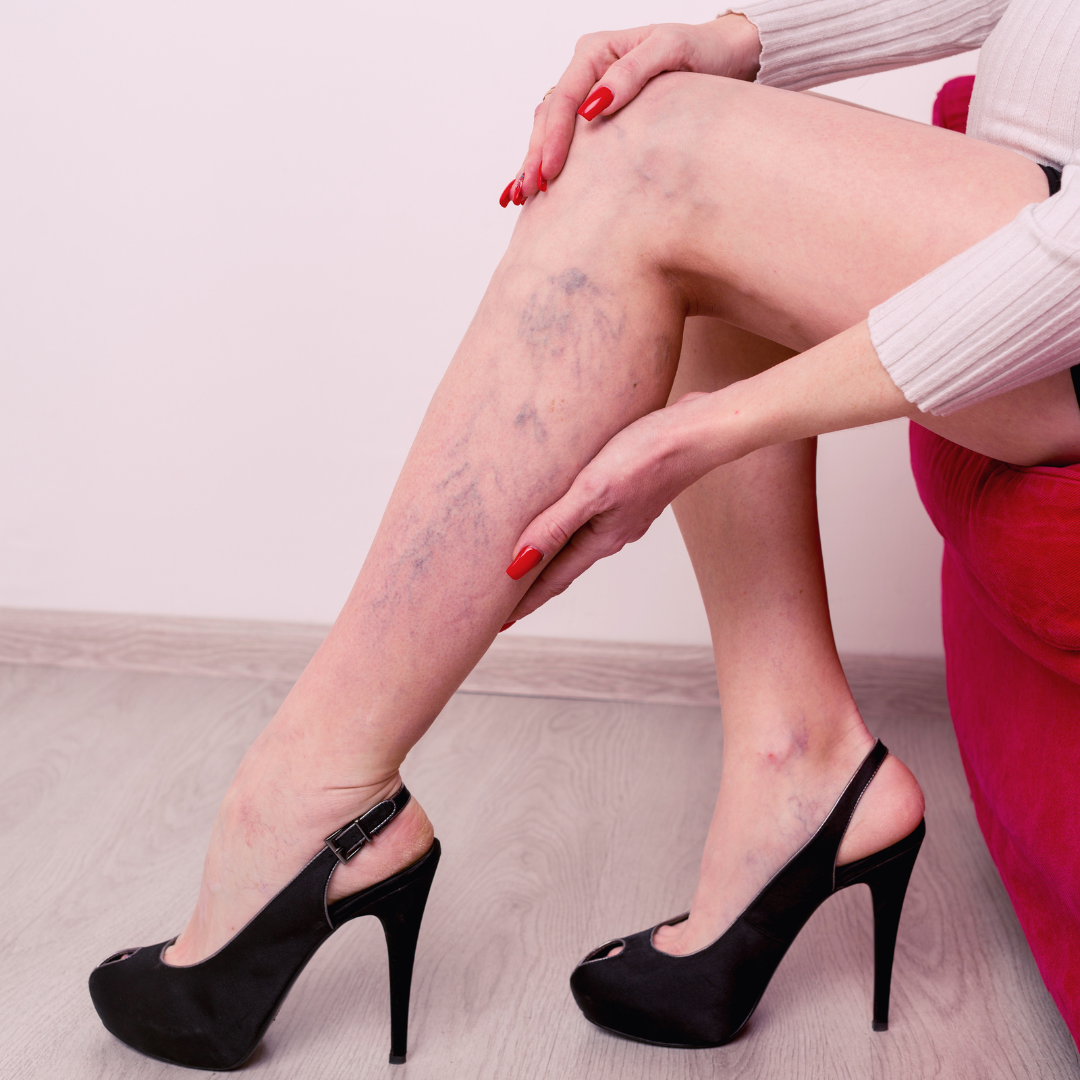Purple veins on the legs are quite common, especially among older adults or people who spend long hours sitting or standing. At first, these veins may only affect appearance without causing discomfort. Over time, however, they can pose significant health risks.
This guide will help you understand the causes, symptoms, treatments, and preventive measures for purple veins on the legs.

Common Causes of Purple Veins on Legs
Several factors can contribute to the development of purple leg veins, including:
- Genetics– Family history plays a major role. Certain genes that weaken blood vessel walls can be passed down, increasing risk.
- Sedentary lifestyle– Sitting or standing too long reduces circulation, leading to blood pooling and extra pressure on veins.
- Excess weight– Being overweight or obese puts added strain on leg veins, weakening vein valves over time.

Could Purple Veins Be a Sign of Disease?
In some cases, purple veins may indicate underlying medical conditions:
- Chronic venous insufficiency– When vein valves don’t work properly, blood collects in the veins, causing enlargement and discoloration.
- Arterial blockages or vascular issues– These can contribute to purple veins.
- Leg injuries– Trauma may temporarily cause veins to appear purple.
- Cardiovascular problems– If purple veins are paired with shortness of breath or chest pain, this may point to heart-related issues.
- Type 2 diabetes– This condition can weaken blood vessels and lead to visible vein changes.
If left untreated, purple veins may progress to venous ulcers, deep vein thrombosis, or phlebitis. Early recognition is key.

Early Symptoms of Purple Veins on Legs
Early Stage
-
Small bluish or purplish veins under the skin.
-
Usually painless, often noticed by others first.
-
Appear after sitting or standing too long.
Progressed Stage
-
Veins enlarge, darken, and become raised.
-
Symptoms include heaviness, swelling, cramps, or burning in the legs.
-
Discomfort worsens after activity or by the end of the day.

Prevention and Management
Purple veins may serve as a warning sign of an underlying condition. If veins persist or are accompanied by pain, swelling, or other symptoms, consult a doctor. Meanwhile, the following lifestyle changes can help:
- Maintain a healthy weight– Relieves pressure on leg veins.
- Exercise regularly– Improves circulation and strengthens leg muscles. Aim for 30 minutes of activity daily.
- Balance work and rest– Take breaks if your job requires long hours of standing or sitting.
- Use compression stockings– Helps prevent blood pooling.
- Limit high heels– Frequent use increases vein pressure.

Final Thoughts
Purple veins on the legs may begin as a minor cosmetic issue but can be an early sign of more serious problems. Don’t ignore them—even if they’re painless. If you notice persistent or worsening veins, especially when accompanied by swelling, heaviness, or chest discomfort, seek medical advice promptly. Early treatment can prevent complications and keep your legs healthy.
Disclaimer:This article is for informational purposes only and does not substitute professional medical advice. Consult your doctor before making health changes.